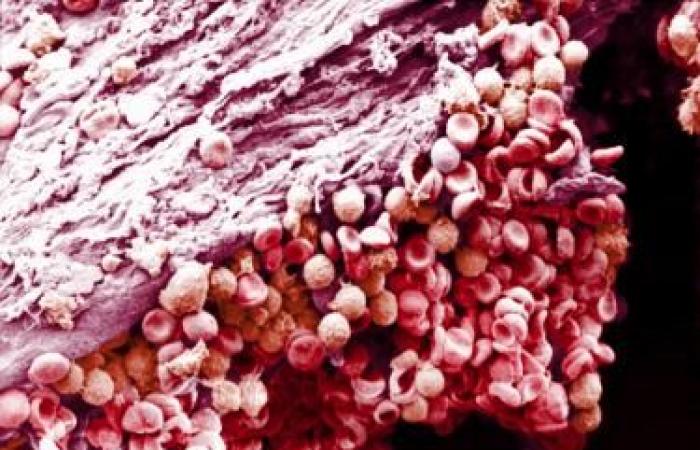Thromboembolic events, deep venous thrombosis and pulmonary embolism, remain frequent in patients with oncology. They remain the second cause of death in cancer patients, after cancer itself.
Prophylaxis is recommended in secondary prevention in cancer patients who have already expressed a thromboembolic complication, as long as cancer remains active or the treatment of cancer is underway for at least six months.
As a reminder, the Clot trial has been showing thrombosis linked to cancer for twenty years, the interest of anticoagulant treatment with low molecular weight heparin for six months. Since then, direct oral anticoagulants (AOD) have been adopted in this indication. And various studies have confirmed that the risk of recurrence of Thromboembolie continues beyond six months, justifying a more prolonged treatment.
Improve the risk-risk balance of long-term treatment
But the treatment remains associated with a high risk of hemorrhagic side effects. Hence questions concerning the AOD dose to be used to improve the risk-risk report of this secondary prevention, in particular in the long term. A team of French, European and North American researchers, coordinated by the AP-HP tried to respond with a clinical trial of non-inferiority, the API-CAT test (1).
In this context, 1,766 patients with active cancer, metastatic in 66 % of cases, 67 years on average, were recruited at a median duration of 8 months after pulmonary embolism or deep venous thrombosis. All and all, the trial having included 57 % of women, had already received anticoagulant treatment for at least 6 months. These participants were randomized to receive, for an additional year, two daily doses of Apixaban, either of 2.5 mg (reduced dose), or 5 mg (full dose, currently recommended).
The primary composite criterion concerned the recurrences of thromboembolies, fatal or not; Clinically significant hemorrhages were the safety criterion.
Non-inferiority in terms of efficiency …
Results, the Apixaban half-dose does as well as the usual complete dose of drugs to prevent recurrences of thromboembolic events in patients with cancer. A cumulative incidence of 2.1 % recurrence was recorded among patients treated with the Apixaban half-dose, against 2.8 % in the control arm, by 2.8 %, non-lower figures.
… Superiority in terms of security
In terms of security, the half-dose of Apixaban turns out to be better than the complete dose: the risk of unwanted hemorrhagic effect is 25 % lower with a lower dose of AOD: only 12.1 % of the patients treated with half-dose developed clinically significant hemorrhage, against 15.6 % of those treated with complete dose.
“We can say that the reduced dose of Apixaban is both as effective and safer as the full dose,” Concludes Pr Isabelle Mahé, head of the internal medicine service at Louis-Mourier Hospital (AP-HP), and Paris Cité University. “These results should lead to an update of international recommendations, concerning prolonged treatment in active cancer patients who have already received anticoagulant treatment for at least six months for the treatment of a TEV event, in favor of a reduced dose anticoagulant. »»
Note that in the study, mortality appeared similar in the two groups, with a mortality rate at 12 months of 17, 7 % among the participants of the interventional group, and 19.6 % among those of the control arm.
(1) Mahé I et al. Extended Reduced-Dose Apixaban for Cancer-Associated Venous Thromboembolism. New England Journal of Medicine. N Engl J Med 2025;392:1363-73. Published March 29, 2025.








